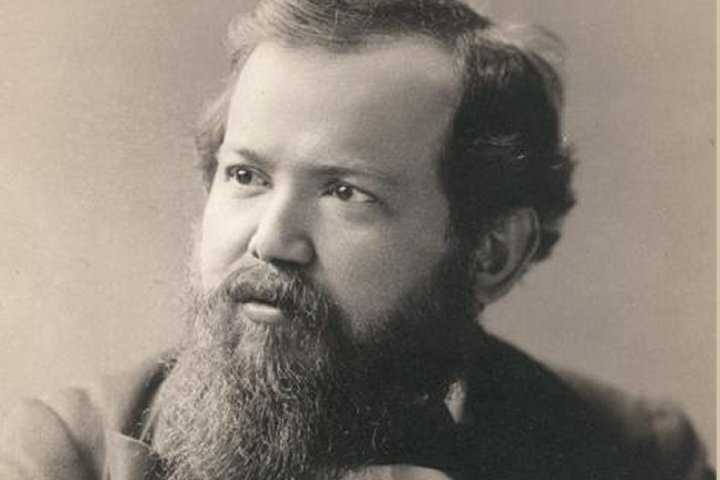Wilhelm Steinitz was the first official World Chess Champion in the world, reigning from 1886-1894. The grandmaster was instrumental in nurturing competitive chess during his time through his positional approach to chess.
Steinitz was born in Prague (which was part of the Austrian Empire during the time) and learnt chess at an early age of 12. His progress as a chess prodigy was astounding as he came to be established as the best player of those times. In 1866, Wilhelm Steinitz became the first official world champion after defeating Johannes Zukertort and fulfilling the winning criteria by winning his tenth game. The game had five draws.
Is cognitive skill development possible in e-learning? Check for more details:
Transforming the framework of Chess
Steinitz grew up in the “Romantic” era of chess when the focus was more on elaborate attacks with tumultuous sacrifices. The attacks, though, had uncertain results. The strategy most often employed was that the attacking side would eventually end up losing the entire troop and thus, the game. The then exponent of the game Adolf Anderssen propagated the style and it was followed by other players including Steinitz, in his early days.
Wihelm Steinitz’s innovations in the game of chess paved the way for the foundation of the positional themes that we are familiar with in today’s chess game tactics.
Tagged as the “Austrian Morphy,” in honour of his famous predecessor and unofficial World Chess Champion Paul Morphy, Steinitz contributed immensely to the literature of Chess through his writings and teachings on the games that were highly acclaimed in those times. Stalwarts like Tarrasch and Lasker revered Wilhelm Steinitz as their “teacher.”
In 1866 the 30-year-old Wilhelm Steinitz defeated Adolf Anderssen, the strongest player of those times, in a 14 games-match (six wins, eight losses, and no draws).
Though Steinitz is now known as the “father of positional play”, in the match he engaged the “attack-at-all-costs” style that was made popular by Anderssen in the 1850s and 60s.
Shortly after a match with Lasker, Steinitz suffered a mental breakdown and had to quit chess. But he made his comeback in 1882. In 1886, he went on to defeat his contemporary and rival Zuckertort in the first-ever world chess championship conducted in New York. Steinitz claimed the world’s first official Chess Champion title.
Steinitz also defeated stalwarts like Gunsberg and Chigorin during his reign as chess champion for 8 years. He lost his championship in 1894 when he was defeated by the then up and coming legend from Germany, Emanuel Lasker.
Steinitz’s innovation of Positional Sacrifices
Steinitz had immensely contributed to the evolution of chess, but his greatest one must be the revelation of the significance of positional elements in a game.
It was around the 1870s that he introduced his varied approach – the positional style of play – which he proved to be superior to the then existing attack-mode tactic of the game. Steinitz’s ideas were initially considered “cowardly” during those times and triggered debates before they were given due credit and were accepted and practised by leading players.
The Grand Master Aleksandr Lenderman analyses Steinitz’s instructive positional sacrifices in his new course, Lenderman Method 2: Chess Secrets of the World Champions. Lenderman explains the way Steinitz sacrifices a full piece to get hold of the rival’s king in the center. He builds up pressure on the opponent that Black would fail to stand strong in this clever strategy.
Another example is the attack on the kingside. Steinitz used the h-pawn to gain control over the g4-square. He would then hop in with a knight. Such a threat would weaken the kingside of White. Steinitz also used this tactic to activate his rook in an “h6-to-g6” path.
The third example is when Black uses the open b-file to exchange rooks and queens. Such a step would strengthen the game and save the endgame. So Steinitz placed his rook on b6!
Through such an exchange-sacrifice, Steinitz claimed a powerful passed pawn. The master player closed the b-file so he could eliminate more exchanges. He would then open diagonals and squares for his minor pieces. His bishop on c3 would have a good diagonal along a3-f8, while the knight could move to e5 or c5.
Such a clever exchange-sacrifice was later adapted and perfected by succeeding stalwarts like Alekhine, Botvinnik etc.
Wilhelm Steinitz is known to be one of the founder pillars of modern chess. His style is best described by his rival and successive world champion Emanuel Lasker. To quote him, “In the beginning of the game ignore the search for combinations, abstain from violent moves, aim for small advantages, accumulate them, and only after having attained these ends search for the combination – and then with all the power of will and intellect, because then the combination must exist, however deeply hidden.”
If you would like to go deeper into the winning strategies in chess and get your child a practical and foundational know-how of the game call us at:63664 48646. We are a crew of passionate chess players who teach chess to kids for the pure joy of teaching such a brilliant game as well as for the benefits of the mind game as a benefactor in cognitive development in children.


